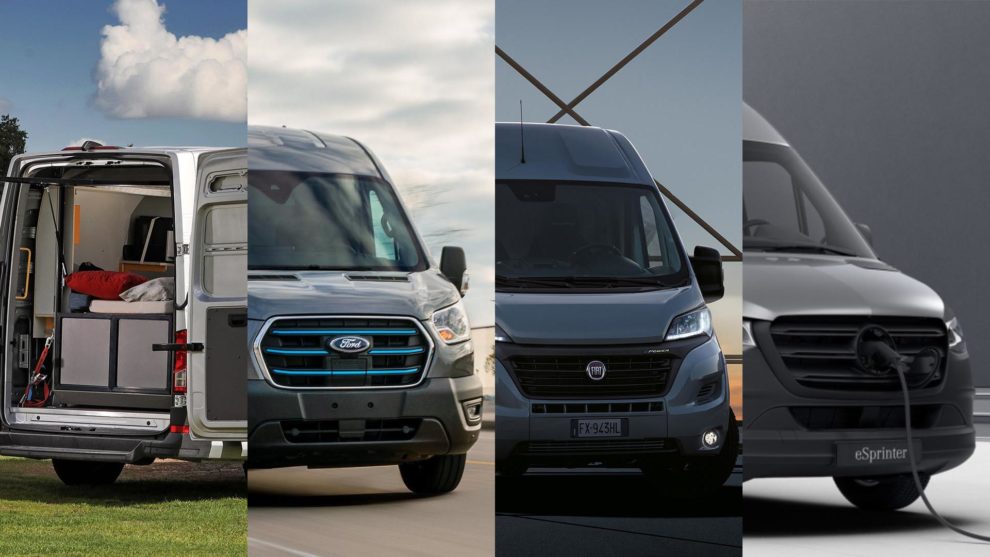November 18, 2020 – There is a lot of talk these days about the new 100% electric Ford Transit, officially announced by the US company. Reading the press release, there is some reason for enthusiasm, starting with the declared autonomy in the combined WLTP cycle of 350 kilometers. Based on the tests we see carried out on electric cars, this could mean a range of between 250 and 300 kilometers true, depending on the conditions of the road and the load. But this is not the point. Given that however for those who do wide-ranging tourism this is still a strong limitation, Ford’s announcement seems premature and made more to bother Fiat, that its E-Ducato has announced it for many months without having it yet put into serial production.
Ford writes in its statement that “while many of the newcomers to the industry are still building prototypes, developing test protocols and addressing the most challenging conditions of use, the Ford commercial vehicle ecosystem is expanding…”. The reality is that E-Transit is also more or less in the same development phase as the Italian competitor. The first deliveries are in fact expected in early 2022, 14 months from now. In the meantime, the company “will undertake new tests with E-Transit in the main European markets starting from 2021“.
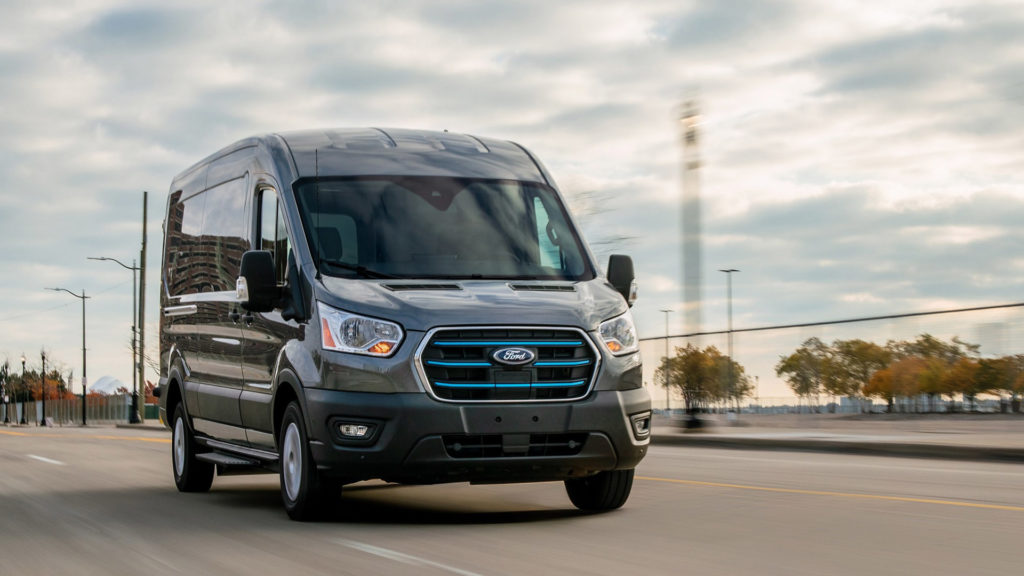
Given that the two competitors are more or less equal in terms of development phase (indeed, Fiat theoretically should arrive on the market before Ford), let’s see where we are from a technological point of view. Both vehicles place the batteries under the floor, leaving the load volume unchanged. While Ford announces a single size of accumulators, 67 kWh, Fiat plans to propose a modular battery with a capacity from 47 to 79 kWh, which should allow distances between 200 and 360 kilometers, calculated however with the NEDC cycle, which offers more optimistic values of those of the WLTP cycle used by Ford.
For charging, Ford will rely on an 11.8 kW alternating current (AC) on-board system capable of restoring full range in up to 8.2 hours. If connected to direct current columns, the E-Transit will be able to accept input up to 115 kW, reducing charging times. Ford says it will be possible to go from a level of 15% to 80% in 34 minutes. The data of the E-Ducato speak of an 11 kW AC recharge in 4.5 hours for the smaller batteries and in 8 hours for the more capable version, while using the columns with 50 kW power the values go respectively to 50 minutes and 1.25 minutes.
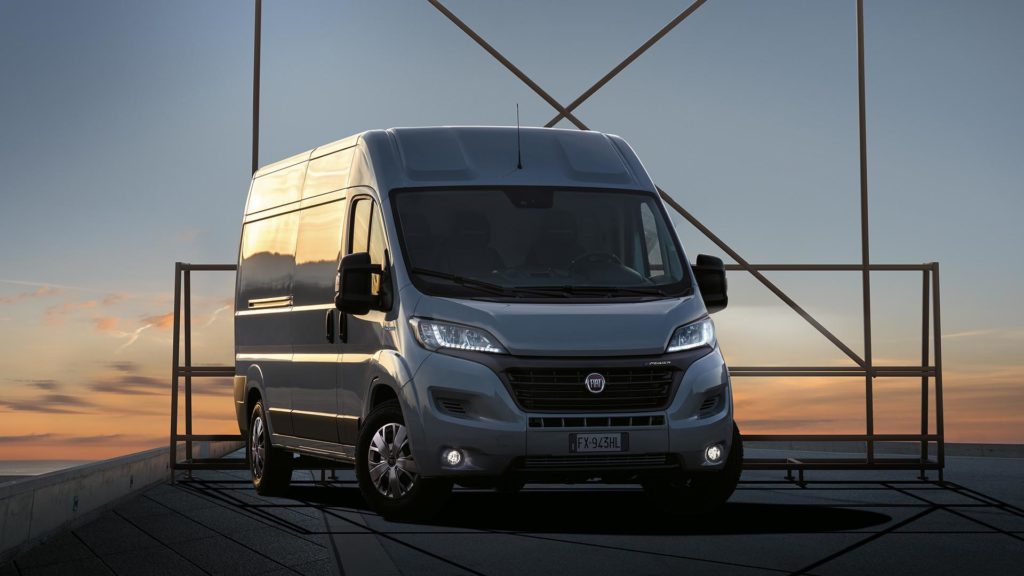
Finally, speaking of the power developed by the electric motors, Ford declares a maximum of 269 horsepower (198 kW) for the E-Transit, while Fiat stops at 122 horsepower (90 kW). In addition, the Italian van will have a self-limited top speed of 100 kilometers per hour in order not to reduce the range too much.
However, for use on recreational vehicles the blanket is still too short. Volkswagen thought of what the use of a fully electric vehicle as a camper could mean: an e-Crafter was converted into a recreational vehicle and used to go from Hanover to the North Cape and back, a trip of 7,500 kilometres. The autonomy declared for the vehicle that was used was 173 kilometers in the NEDC cycle and it therefore took 18 days and 95 stops to recharge, for an average duration of 1.5 hour each, to reach the destination and return.
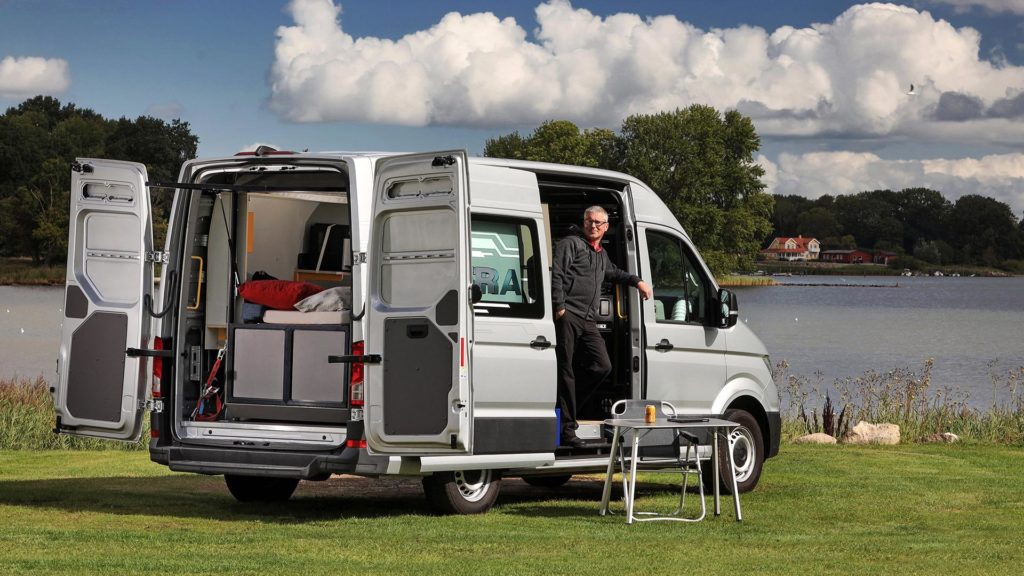
The Volkswagen e-Crafter is only available in the L2H3 version (599 centimeters in length by 204 in width and 305 in height, with a 3640 mm wheelbase), has a declared autonomy in the WLTP cycle of 115 kilometers, with a 35.8 kWh battery, which can be recharged in 5 hours and 20 minutes with 7.2 kW alternating current and in 45 minutes with 40 kW direct current. The e-Crafter can also be recharged from home sockets, with an absorption of 2.3 kW, in 17 hours. And this highlights how the entirely theoretical idea of using a campsite or a rest area for night charging is now completely unsustainable, at least until the accommodation facilities are adequately equipped. At the moment we must hope that the column will support the “weight” of any air conditioner…
If all this is not enough for you, I would add that the total weight with driver is already 2,517 kilograms without any interior equipment, that the maximum speed of 90 kilometers per hour compared to a power of 136 horses (100 kW) and that the price for the van alone is – hold on tight – 85,623 euros!
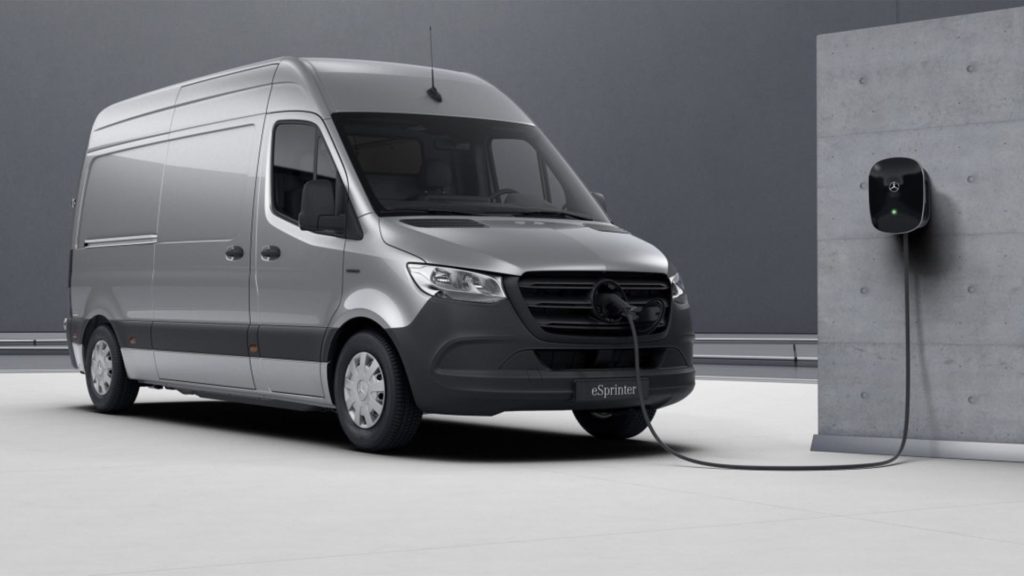
To go down in price, you have to look at Mercedes, where the eSprinter is offered at €65,270 with 35 kWh batteries or €73,319 with a 47 kWh accumulator. In both cases, the power is 116 horsepower (85 kW), while the payload is only 978 and 824 kilograms respectively. The dimensions are more or less those of the competitors, with 609 centimeters in length and 269 in height. The autonomy declared in the WLTP cycle ranges from 102 to 158 kilometers, depending on the battery. The 7.4 kW AC charging time takes 6 or 8 hours, while with the 80 kW DC system it takes 25 minutes to go from 10 to 80%.
In short, the opposition to diesel engines by governments and local institutions is strong, but the reality is that the alternative is still far away for our sector.
© 2021 seimetri.it – If you want to leave a comment on this article, you can do it on our Facebook page











